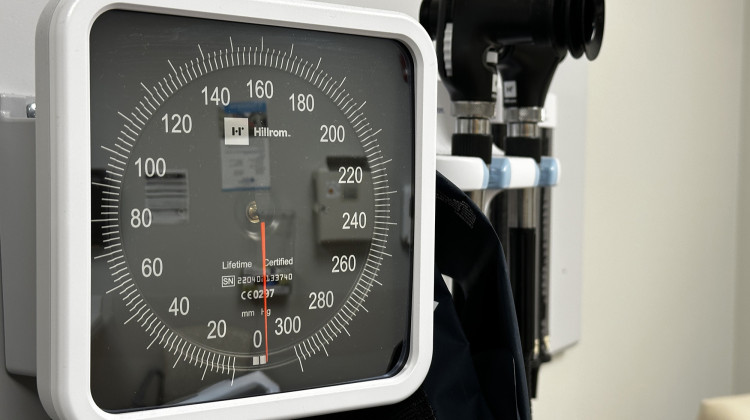If you've ever had an eye infection, you know how annoying it can be to get drops of medicine on the eyeball a few times a day. It's an even harder task with children or for older adults who don't always have the dexterity to squeeze they used to.
That's why researchers have developed an ultra-thin contact that can be placed on the eye to deliver drugs slowly — in a matter of hours or they hope even days — before dissolving away.
Called nanowafers, these lenses are one-twentieth the thickness of a contact lens. Each wafer, made of a thin resin called polyvinyl alcohol, contains tiny reservoirs that can be filled with drugs that are released gradually.
The wafer is not only less tedious than eye drops, it's more efficient, says Dr. Steven Pflugfelder, a professor of ophthalmology at Baylor College of Medicine in Dallas and an author of a study, published in the journal ACS Nano. Eye drops aren't the best way to deliver drugs to the eye, given human reflexes that cause us to blink and tear, washing the medicine away.
The nanowafer is especially good for children, babies and elderly adults, says Pflugfelder. "As opposed to a caregiver having to instill drops multiple times a day, the caregiver could put a wafer in the eye once a day or every other day." Then the wafer's polyvinyl alcohol, the same stuff found in artificial tears, would simply dissolve away.
Unlike contacts, the wafers don't need to be placed on the cornea, but could sit on the sclera, the white part of the eye, to treat conditions like dry eye, he says.
In principle the wafer shouldn't affect vision, says Ghanashyam Acharya, an assistant professor at Baylor and another author of the paper. "The nanowafer is very thin and transparent ... and it quickly adheres to the cornea," he says. However, he adds, further studies must be done to ensure that's true for all conditions.
The Baylor team isn't the first to try adding medication to contacts – it's been the subject of research for several decades. Other solutions have coated the lens with a film or added diamond nanogel to help bind certain drugs. But the nanowafer, Pflugfelder says, is notable for its thinness.
There is controversy over whether nanodrugs are safe. Their small size, which makes them useful, could also make them toxic. However, the nanowafers don't use free-floating nanoparticles and only use drugs already prescribed in clinics.
To test the nanowafers, Pflugfelder and his team created tiny versions for mice with eye injuries. The injuries mimicked those found in humans: "Soldiers in the army get eye injuries ... given the nature of explosive devices used," Pflugfelder tells Shots, and similar injuries can be found in the chemical industry from acid.
The scientists loaded the tiny wells in the wafers with doxycycline, an antibiotic. The wafers were applied to the mice's eyes and the release of the antibiotic in the eye was measured through the mice's tears.
The researchers found that the wafer released the antibiotic over four hours. Furthermore, mice treated with the wafer showed signs of the drug in their eyes up to 24 hours later, but mice treated with eye drops showed none even minutes after the drops were given.
The team also tested the prescription drug Axitinib for treating corneal burns. They found that the wafer, though it contained half the dose of the eye drops (5 micrograms instead of 10 micrograms), was twice as effective at healing the eye.
"What I liked about this [study] is you have this ... wafer that has these little wells inside so beyond being able to release a drug ... one could think about delivering multiple drugs with this device," says Dean Ho, a bioengineer at UCLA who wasn't involved in the study. "It's a nice first look at a noninvasive way to deliver drugs in discrete units." Using drugs at the nanoscale is great for localizing treatment, he says, and the nanowafer is a perfect example.
The first clinical use for the nanowafer that Pflugfelder and the team are looking at is for cystinosis, a genetic condition that causes crystals of cystine, an amino acid, to build up in the cornea.
The traditional treatment, a drug called cysteamine, is delivered once an hour by eye drop to dissolve the crystals. But Pflugfelder and colleagues hope inserting the wafer once a day can accomplish the same thing. They hope to start clinical trials in a year, but don't yet know when, if all goes well, they'll be ready for market.
9(MDEwMDc1MzM3MDEzNDczOTA0MDc1MzViMQ001))
 DONATE
DONATE







 View More Articles
View More Articles

 Support WFYI. We can't do it without you.
Support WFYI. We can't do it without you.